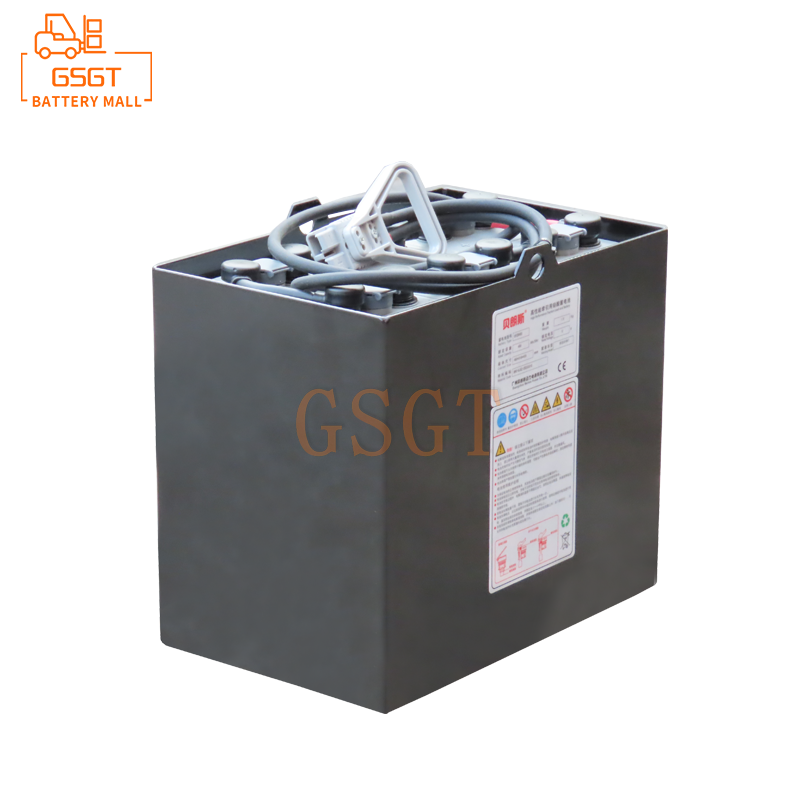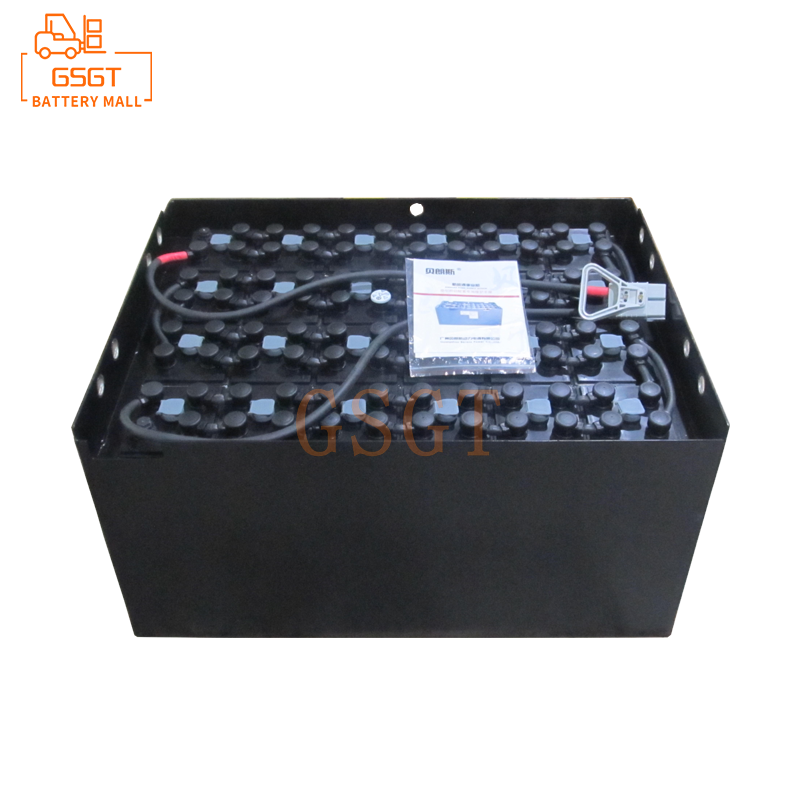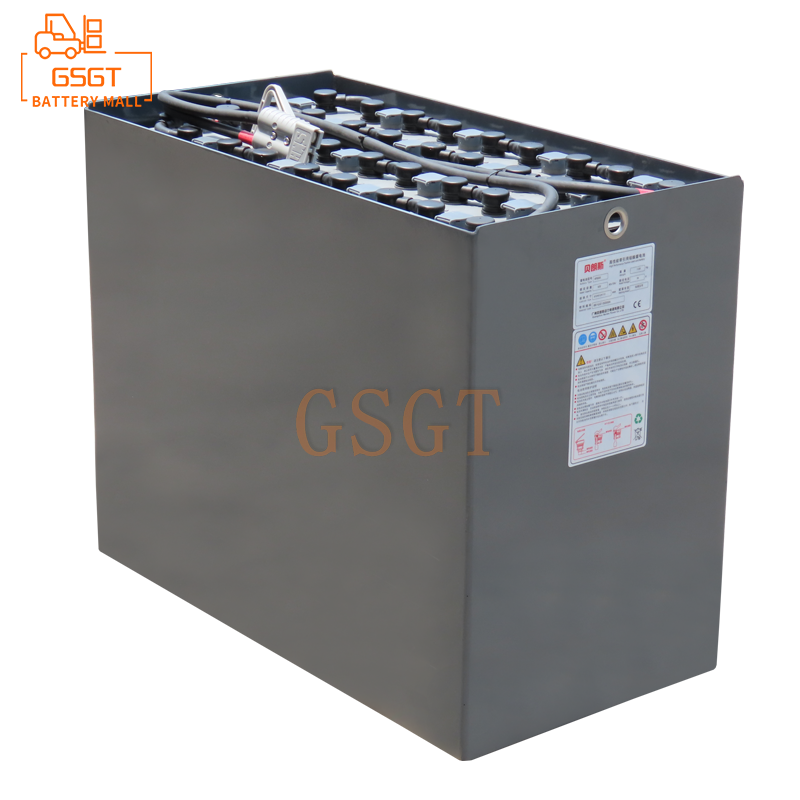Time:2025-05-24 16:33:41
Browse:603
In the modern industrial warehousing and logistics field, forklifts, as important handling equipment, are mostly powered by lead-acid batteries. Lead-acid batteries have advantages such as low cost and large capacity. However, during use, due to reasons such as collision, aging, and overcharging, battery leakage may occur. Once the forklift battery leaks acid, it will not only cause serious damage to the equipment, but also may threaten personnel safety and pollute the environment. Therefore, mastering scientific and standardized emergency response methods for acid leakage, especially neutralization and protection operations, is of great significance for ensuring the safe production of enterprises, safeguarding the health of employees, and protecting the environment.
1. Understanding the characteristics of forklift battery acid solution
The electrolyte of lead-acid batteries used in forklifts mainly consists of dilute sulfuric acid, which is highly acidic, corrosive and has certain toxicity. Dilute sulfuric acid can rapidly undergo chemical reactions with substances such as metals, fabrics, and concrete, leading to metal corrosion, fabric damage, and damage to ground and building structures. If it comes into direct contact with the human body, it can cause serious damage to the skin, eyes, respiratory tract, etc. In mild cases, symptoms such as burns, pain, and redness and swelling may occur; in severe cases, it may lead to permanent damage or even endanger life. Furthermore, if the leaked acid liquid is discharged directly without treatment, it will pollute the soil and water sources and disrupt the ecological balance. Therefore, when dealing with acid leakage from forklift batteries, it is essential to fully understand its characteristics and take targeted protective and handling measures.
2. Preparatory Work for Emergency Response
(1) Provision and wearing of personnel protective equipment
Protective clothing: Protective clothing with good acid resistance should be chosen, and the materials are usually chloroprene rubber, nitrile rubber or polyvinyl chloride, etc. Protective clothing should fully cover the body, including the head, neck, wrists, ankles and other parts, to avoid skin exposure. Before wearing it, check whether the protective suit is damaged or cracked to ensure its protective effect. All protective gloves: Use acid-resistant gloves, such as nitrile rubber gloves or fluorine rubber gloves. The length of the gloves should cover at least 10 centimeters above the wrist to prevent acid from splashing onto the hands. When wearing, make sure the gloves fit tightly to the cuffs of the protective suit to ensure there are no gaps.
Protective glasses and face masks: Wear closed protective glasses to prevent acid from splashing into the eyes. If the leakage is severe, a full face mask should also be worn. A full face mask can not only protect the eyes but also guard the mouth and nose to prevent inhalation of acid mist. Before use, check the sealing of the protective glasses and the mask.
Protective shoes: Choose high-waisted rain boots that are resistant to acid and alkali or special chemical-resistant shoes. The upper of the shoes should be higher than the ankle to prevent acid from flowing into the shoes. Make sure that the shoes fit tightly with the cuffs of the trousers when wearing them.
(2) Preparation of emergency response tools and materials
Adsorption materials: Prepare an adequate amount of adsorption cotton, adsorption pads or sand and soil and other adsorption materials. Adsorption cotton and adsorption pads have excellent liquid absorption performance and can quickly adsorb acid solutions. Sand and soil are suitable for the initial treatment of large-scale leakage and can effectively control the spread of acid.
Neutralizing agents: Commonly used neutralizing agents include sodium bicarbonate (baking soda), calcium hydroxide (slaked lime), etc. Sodium bicarbonate has a mild reaction and the generated carbon dioxide gas is easy to be discharged, making it a relatively ideal neutralizing material. Calcium hydroxide has a remarkable neutralization effect, but heat is released during the reaction process, so caution should be exercised when using it. Prepare an appropriate amount of neutralizing agent based on the volume and concentration of the leaked acid solution.
Collection tools: Prepare plastic buckets, shovels, brooms and other tools to collect the adsorbed materials and the neutralized residues. The material of the tools should be selected from acid-resistant plastic or rubber products. Metal tools should be avoided to prevent reactions with acid solutions.
Testing equipment: Carry pH test paper or a portable pH detector to measure the acidity or alkalinity of the liquid after neutralization and determine whether the neutralization reaction is complete.
3. On-site Emergency Response Procedures for Acid Leakage
(1) On-site isolation and warning
Once acid leakage from the forklift battery is detected, the emergency response plan should be activated immediately. First of all, quickly isolate the leakage area, set up obvious warning signs and prohibit irrelevant personnel from entering. According to the leakage range, set up isolation belts with a radius of 5 to 10 meters centered on the leakage point. If it is indoors, close the doors and Windows of the relevant area to prevent the spread of acid mist. At the same time, evacuate the surrounding people to a safe area and arrange for dedicated personnel to stand guard outside the isolation belt to ensure the order on the spot.
(2) Adsorb acid solution
After putting on protective equipment, emergency response personnel should use adsorption materials as soon as possible to adsorb the leaked acid solution. Starting from the periphery of the leakage area, gradually lay adsorption cotton or adsorption pads towards the center to ensure that the acid solution is completely covered. For acid solutions with strong fluidity, sand and soil can first be used to set up cofferdams in their flow direction to prevent the diffusion of acid solutions, and then adsorption treatment can be carried out. During the adsorption process, be careful to move gently to avoid splashing the acid solution. After the adsorption is completed, use a shovel to carefully collect the material that has adsorbed the acid solution into a plastic bucket, and seal the bucket lid well to prevent secondary leakage.
(3) Neutralization treatment
Select neutralizing agent: Based on the actual situation on site and the prepared neutralizing agent, choose the appropriate neutralizing material. If the leakage is small, sodium bicarbonate can be given priority for use. If the leakage is large, calcium hydroxide may be more suitable, but it is necessary to pay attention to controlling the reaction temperature.
Evenly sprinkle the neutralizing agent: Evenly sprinkle the neutralizing agent on the leakage area after adsorption, with a coverage thickness of approximately 1-2 centimeters. During the spreading process, it is necessary to ensure that the neutralizing agent comes into full contact with the residual acid solution. A broom or spatula can be used to stir appropriately to accelerate the neutralization reaction. During the neutralization reaction process, gases and heat are produced. Personnel should maintain a safe distance to avoid injury.
Test the pH level: Wait for 15 to 30 minutes until the neutralization reaction is fully carried out. Then, use pH test paper or a portable pH detector to test the neutralized liquid. If the test result shows that the pH value is between 6 and 8, it indicates that the neutralization reaction is basically completed. If the pH value is still below 6, neutralizing agents need to be added continuously until the appropriate acidity or alkalinity is achieved.
(4) Cleaning up and Aftermath handling
After neutralization is completed, use a shovel and broom to collect the neutralized residue into a plastic bucket and store it properly together with the materials that previously adsorbed the acid solution. Then, rinse the leakage area with a large amount of clean water. The rinsing area should be larger than the leakage area to ensure that the remaining acid solution and neutralization products are completely removed. The wastewater after flushing should be introduced into a dedicated collection pool and must not be discharged directly. Finally, clean and disinfect the used protective equipment and tools, and check for any damage. If any damage is found, replace them in time.
4. Handling of Special Circumstances
(1) A large amount of acid leakage
When a large amount of acid leakage occurs, relying solely on manual handling may not be able to control the situation in time. At this point, a professional emergency response team should be contacted immediately and a report should be made to the superior department. Before waiting for the arrival of professionals, the following measures can be taken: Use sandbags or other heavy objects to further reinforce the cofferdam to prevent the spread of acid. Turn on the ventilation equipment to reduce the concentration of acid mist indoors. If you are outdoors, pay attention to the wind direction to avoid the acid mist spreading with the wind and affecting the surrounding areas.
(2) Personnel exposure to acid solutions
If any person accidentally comes into contact with the acid solution, emergency treatment should be carried out immediately. For skin contact, quickly remove contaminated clothing and rinse the injured area with plenty of running water for 15 to 30 minutes. During the rinsing process, keep turning the injured area to ensure thorough rinsing. After rinsing, apply burn ointment or Vaseline and go to the hospital for treatment in time. If acid splashes into your eyes, immediately rinse them with plenty of water. During the rinsing process, keep your eyes open and tilt your head towards the injured side to prevent the acid from flowing into the other eye. Seek medical attention as soon as possible after rinsing for at least 15 minutes.
5. Measures to Prevent Battery Leakage in Forklifts
(1) Daily maintenance and care
Regularly inspect and maintain the forklift battery, check if the battery casing is damaged or cracked, if the terminal posts are loose, and if the electrolyte level is normal. Replenish distilled water or special electrolyte in a timely manner, but avoid excessive addition. Keep the battery surface clean and dry to prevent the accumulation of dust and impurities that may cause a short circuit.
(2) Standardized operation
Operators must strictly follow the operating procedures when using forklifts, avoid sudden braking, sharp turns and other violent operations, and prevent the battery from being hit and shaken. During the charging process, it is necessary to control the charging time and current well to avoid overcharging. Meanwhile, regular training should be provided to the operators to enhance their safety awareness and operational skills.
(3) Replace the battery regularly
Replace the forklift battery regularly based on its service life and actual usage conditions. Generally speaking, the service life of lead-acid batteries is 2 to 3 years. When the battery shows a significant decrease in capacity or difficulty in charging, it should be replaced in time to prevent leakage due to battery aging.
Emergency response to acid leakage from forklift batteries is a highly professional and technical task, involving multiple aspects such as personnel protection, acid adsorption, and neutralization treatment. Only by fully understanding the characteristics of acid solutions, doing a good job in the preparatory work in advance, handling them in accordance with scientific and standardized procedures, and taking effective preventive measures, can the harm caused by acid leakage be minimized to the greatest extent, ensuring the safe production of enterprises and the life and health of personnel, and protecting the ecological environment. In practical work, enterprises should constantly improve their emergency response plans, strengthen emergency drills, and enhance their emergency handling capabilities to ensure that they can respond promptly and effectively to sudden situations such as forklift battery leakage.

$3075

$400

$5010

$2960

MESSAGE
Professional And Efficient
Security
Affordable Price
Professional Services